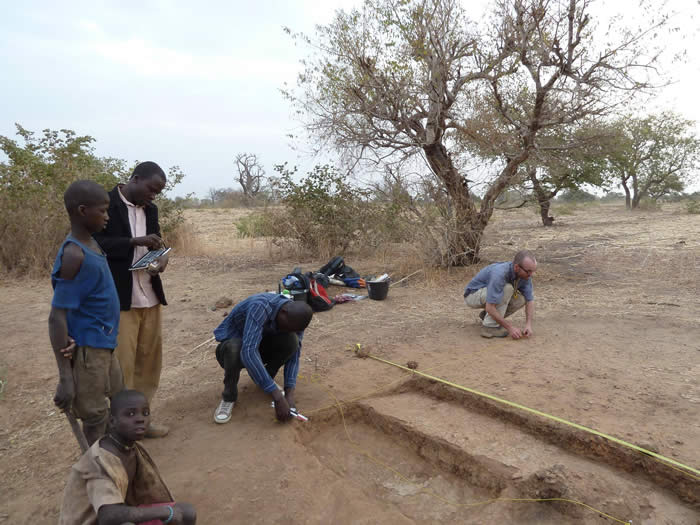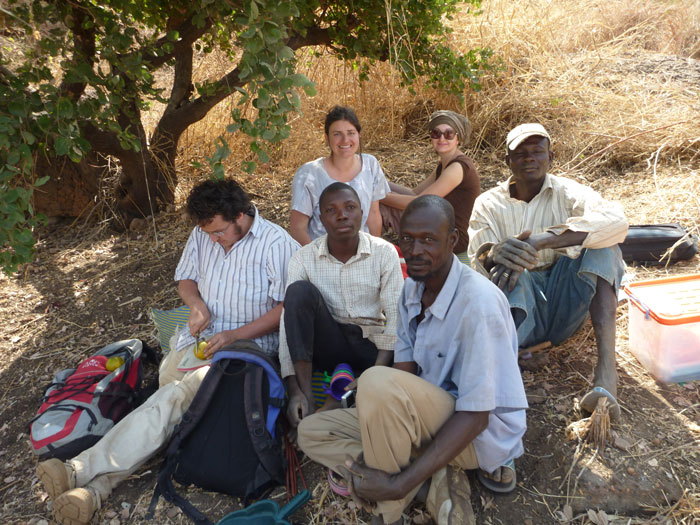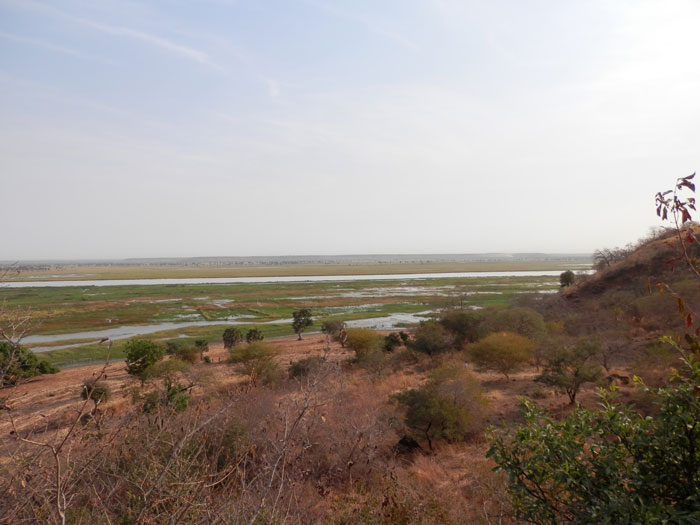Crossroads of empires:
Archaeology, material culture and sociopolitical relationships in West Africa
This new research project, which began on January 2011 and will run for five years, focuses on the archaeology of the Niger River Valley at the border between Bénin and Niger (West Africa) in the period AD 1200-1850. Its aim is to study how medieval ‘empires’ influenced the patterning of settlement and material culture across the landscape. We are hoping to find evidence of the activities of skilled craftspeople – ‘technical specialists’ – such as potters, blacksmiths and dyers, and to explore how their work and daily life were affected by the polities that occupied this landscape in the last millennium. What we know of West Africa in the past centuries is derived largely from historical sources, which tell us that many regions were under the rule of vast polities such as the Songhai, Kanem-Borno, or the Hausa cities. How does the archaeological record bear out, or contradict, these narratives?
The project is funded by the European Research Council and is led by Dr Anne Haour, Reader in the Arts and Archaeology of Africa at the SRU. It will involve yearly fieldwork seasons in Bénin and Niger, and team members are drawn from universities and institutions in Belgium, Bénin, Germany, Niger, and Scotland.
Survey close to Gouroubéri, February 2011. Large baobab trees such as those visible in the background often mark old villages.
There were several reasons for the choice of the Niger River Valley between Bénin and Niger as a field location. Geographically, this region sits not just along the axis of the Niger river, but also at the outlet of two major fossil valleys (the dallols of Niger), and at the crossing-point of important trade routes which ran between the Hausa areas and the forested regions of what is now Ghana. Known as Dendi, this narrow band on either side of the Niger also seems to have played a role in the development of the empire of Songhai. Finally, Borgou, one of the polities of this region, has long been studied by anthropologists and linguists as a zone of huge cultural diversity. Yet the area had been almost fully neglected archaeologically; only brief descriptions existed, mentioning settlement sites, tumuli, iron-working remains and abundant lithic and potsherd scatters. It was therefore the obvious choice for an investigation of the questions with which Crossroads is concerned, and we now hope that archaeology will be able to contribute to the knowledge of this part of the world.
.jpg)
On site in Benin
As anthropologists, archaeologists, historians and soil scientists, we will approach the problem holistically, carrying out a survey of the region as a whole, as well as prospection using geophysics, aerial photography and soils analysis. Selected sites will be subjected to trial excavation while anthropological theoretical perspectives and ethnographical and oral-historical interviews will yield crucial background information for the archaeological data.
Among the questions we seek to address are:
· How does material culture show group membership, status differentiation and population movements? What, in particular, is the role of ‘technical specialists’?
· How did the ‘empires’ play out on the ground in terms of social, economic, religious and political contacts? How did they structure the landscape and the movement of peoples, ideas, and things?
· In fact does the concept of ‘empire’ in itself aid, or hinder, a clear understanding?
A project blog has been set up to provide a forum for communication on the project. Please log in often, comment and/or subscribe to keep up to date with what's happening.

Setting out a test pit at a site downriver from Karimama, February 2011
A potsherd recovered from surface survey - decorated with folded strip roulette and channelling

Excavation team from the site of Tin tin at rest, February 2013
.jpg)
On site in Benin
.jpg)
On site in Benin
.jpg)
On site in Benin

The local landscape

